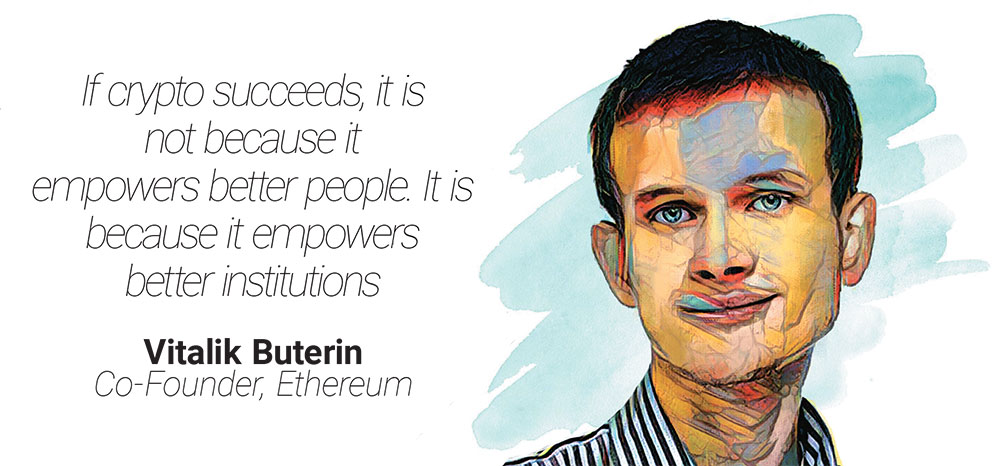The Web3 ecosystem has undergone major turbulence in recent times after witnessing a period of exponential growth worldwide in the last two years. Despite being in its early stages, the industry experienced significant optimism from stakeholders, attracting record funding from venture capitalists and onboarding some stellar resources to boost its growth. The onset of the bear market, coupled with the global economic downturn and interest rate hikes, has subdued the prospects of some promising initiatives in this sector.
While cooling periods in the market were anticipated, an impact like this has affected the confidence of several existing and potential participants of Web3. Now is not an ideal situation for the ecosystem, as there is skepticism around crypto, and the bear market seems to have rubbed this off on some of the believers of the Web3 cause.
The crypto ownership rate in India is higher than the global average of 15%. As of September 2022, 25 million citizens own cryptos in India. A 2021 report by the National Association of Software and Service Companies (NASSCOM) has predicted over eight lakh new jobs by 2030 in the Indian Web3 ecosystem. While these numbers offer a ray of hope, we cannot take it for granted, because a vast range of opportunities are yet to be explored.
The uncertainty around crypto stems largely from the lack of awareness around it, the most common perception of it being just another investment option. The promise of Web3 and how it can revolutionise the internet remains a blur to most people. However, the country’s economy can derive great benefits by deploying Web3-based approaches. For example, Web3 allows instantaneous execution of business operations without the involvement of third parties. The removal of intermediaries can save transaction costs to an extent. More than the cost, users can retain sovereignty over their data and carry out transactions without divulging details that compromise their privacy, thus being part of a secure payment infrastructure.
Web3 can work to the advantage of smaller businesses. With its high accessibility rate, smaller businesses can get involved in the token-based economy, access credit and gain benefits of an efficient B2B and B2C engagement. Similarly, individual entrepreneurs and artists can use non-fungible tokens, popularly called NFTs, to secure rights on their projects and introduce new terms of taking their work public. In order to enhance customer experience in gaming, entertainment, retail, corporate, etc., organisations and businesses can also build their metaverse presence.
What prevents the promise of a transparent, decentralised and accessible version of the internet from coming alive full throttle? The crypto ecosystem has seen some drastic incidents that have destabilised the liquidity of the system, bankrupted established projects and rattled the faith of investors. The argument that stands right now is that it might affect the stability of the monetary system if its adoption takes place at a mass level.
When the term “currency” is assigned to “crypto”, it is automatically assumed that it will be used for transactions that are being done by the fiat currency at present. While this is being explored on a very low scale in some countries and some niche businesses, the prospects of the model working in India seems bleak at the moment. There is no need for regulators to think that digital assets will replace or disrupt the fiat currency. The idea of Web3 is to complement the monetary system by making it decentralised, encrypted on ledgers and remove challenges of security breach and illicit transactions. The introduction of the central bank digital currency can solve this problem to an extent.
It remains a fact that India’s steady prosperity and global recognition will have a new accelerator if the country drives the adoption of Web3 by supporting projects, developers and investors.

However, Web3 is not devoid of challenges. Its infrastructure needs to mature, regulations need to be shaped and classification of these assets should be clarified. But, let us not deny that there are plenty of problems that demand solutions, especially in the financial sector. And India can be the manufacturer of these solutions given its right talent pool and age group advantage of young developers and create economic value that can be exported to the world.
Imagine a breakthrough project that solves crypto token research problems for young investors. It could on-board professionals who are experts in the field of tokenomics, financial market predictors, analysts, marketers and external contributors. These professionals need not be restricted to India but can be based anywhere in the world.
There is anticipation around the growth of the Web3 hardware market in the coming years. With crypto mining described as an energy intensive process and the demand of secure wallets for digital asset storage rising, there will be an increased need for hardware products, and organisations will be ready to export established patents or designs which meet the needs of their consumer. If a “Made in India” tag is attached to any of those innovations, we can make huge progress in establishing our mark in the Web3 space.
According to the NASSCOM insights, Spotify paid $636 per artist and YouTube $2.47 per channel in 2021. In comparison, American venture capital firm Andreessen Horowitz says that Web3 platforms paid an average of $174,000 per creator in this year. The gaming industry, which is already a thriving billion-dollar economy in India, also has immense potential to establish new modes of user engagement and create impactful projects keeping the global gamer persona in mind.
All of these can come true if we have the support of lawmakers. To make sure that we board this ride while the pace is still moderate and get behind the wheels, there are certain things we need to put in place. To begin with, we need to classify digital assets. Let us clarify digital assets as tokens to be used in the Web3 ecosystem for decentralised finance apps, digital autonomous organisations, in-game purchases, etc. A digital asset cannot be termed or perceived as an asset which does not abide by the law, as it adds value to the virtual ecosystem, which creates economic opportunities and unique experiences.
Let us also rethink the taxation structure on the crypto sector. A majority of Indians have not gotten into it yet. Many existing participants have dropped out since the imposition of tax on the sector. We must take a cue from the nations supporting Web3 and reduce taxes of crypto gains at least in the initial phases. High taxes will deter a majority of investors and restrict crypto to a handful of people. That will not benefit the country.
India needs to proactively get involved with global financial institutions and exploit its bilateral ties to create a regulatory framework in the crypto sector. The world demands uniform regulations. The concerns which most leaders in the country have revolve around illicit transactions and financial instability. A concrete regulatory framework and its subsequent implementation is the need of the hour. The government has taken some big steps in promoting start-ups and growing the micro, small and medium enterprises landscape in India. The Web3 ecosystem can benefit from the same type of acknowledgement and validation.
No one denies the risks that could emerge from crypto. In fact, several of them have come true, but the industry has found a way to bounce back. Like every technology, Crypto needs to be used wisely and to its full potential. Let India be the country to shape how crypto should be adopted, used and looked at worldwide.
Nischal Shetty, CEO, WazirX











